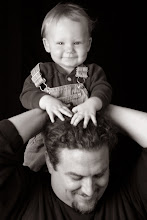
People all over Italy have widely varied accents and often speak regional dialect from back in the days before Italy was a unified country (which didn't happen until about 1870 or so). So when you travel around, not only will you hear unrecognizable dialect in places like San Gimignano and Siracusa, but you'll also hear Italian spoken with vastly different pronunciations.
Sicily is a prime example. They often change the 'o' sound on the end of a word to a 'u' sound--so lo Siciliano, which is the proper Italian for "the Sicilian language" becomes lu Sicilianu. To make it even harder on those of us with a passing knowledge of guidebook Italian, locals will often switch back and forth mid-sentence between dialect and "proper" (read; Florentine) Italian.
Local dialects are an incredibly insightful window into the history of a region. Siclian dialect is peppered with words derived from Arabic, Greek, Spanish, French, and even a little German thrown in, reflecting the many inhabitants the island has known over the years. Up north, in Trentino-Alto Adige, for instance, the influences are primarily from Austria, and along the northeastern border of Italy, in Friuli-Venezia Giulia, you start hearing Eastern European and Slavic influences in the dialect.
Here in Chicago, however, we have an Italian dialect all our own, which I sometimes refer to as Caputiano, in reference to Caputo's, the well-known Italian produce market and deli on Harlem Ave. in Elmwood Park where any real Chicago Italian worth their salt goes to do their shopping.
An informational aside: There are now many grocery establishments calling themselves Caputo's. The original Caputo's are now known as Angelo Caputo's Fresh Markets. The other chain--Joe Caputo and Sons--is decent, but it's not as good as the original, and then there's Caputo Cheese Market in Melrose Park, which is noted to be "Owned & Operated by Wiscon Corporation. Not affiliated with any other Caputo".
Anyway, Caputiano is a unique dialect of Chicago area American-Italians in which the last letter of words (and it's usually limited to names of foodstuffs) is dropped entirely. O's also change to U's, reflective of the Sicilian heritage of many Chicago-area Italians.
So mozzarella becomes mootzarel, scamorza become scamorz sometimes even smooshed down into skmorz, and sopressata
The more you listen, the stranger it gets. Hard 'C' sounds are softened, to the point that they start to sound more like a 'G'. So capicolla sounds like gavigool. Throw in all the nicknames, hand gestures, and typical Italian non-verbal sign language, and you've got something really fun to be a part of.
 Which brings us (finally) to the topic of this post. My family is blessed enough to know an Italian-American family who generously includes us in the annual Easter blowout they hold at their home. In typical fashion, they go all out for this party; bunny and chick-shaped candies are everywhere, there's a lamb-shaped cake, big Easter baskets and stuffed animals for the kids, a mad-dash Easter egg hunt out back promises plastic eggs filled with half-dollar and dollar coins (along with the occasional one filled with dirt!), and, of course, a massive spread of great food.
Which brings us (finally) to the topic of this post. My family is blessed enough to know an Italian-American family who generously includes us in the annual Easter blowout they hold at their home. In typical fashion, they go all out for this party; bunny and chick-shaped candies are everywhere, there's a lamb-shaped cake, big Easter baskets and stuffed animals for the kids, a mad-dash Easter egg hunt out back promises plastic eggs filled with half-dollar and dollar coins (along with the occasional one filled with dirt!), and, of course, a massive spread of great food.The main event and centerpiece of the Easter blowout, though, is Big Mikey's frittat.
A frittat is, basically, a frittata, of course. But it's oh so much more than that. It's the frittata to end all frittate. It's the frittata that ate Melrose Park.
 Big Mikey (in typical Italian-American fashion, "Mikey" is about 6'7" and 280 lbs.) is a pro at this by now. He's got a special pan he uses just for the frittats, which is the biggest, deepest sauté pan I've ever seen in my life. The day before, he loads up on imported salseech and salumi--soopersatt, gavigool, mortadell--cheeses like fontina, scamorza, and ricotta, which gets drained through cheesecloth, and a case of eggs, and then on Easter morning, he gets down to work.
Big Mikey (in typical Italian-American fashion, "Mikey" is about 6'7" and 280 lbs.) is a pro at this by now. He's got a special pan he uses just for the frittats, which is the biggest, deepest sauté pan I've ever seen in my life. The day before, he loads up on imported salseech and salumi--soopersatt, gavigool, mortadell--cheeses like fontina, scamorza, and ricotta, which gets drained through cheesecloth, and a case of eggs, and then on Easter morning, he gets down to work.Big Mikey occupies his corner of the kitchen all morning, cranking out one frittat after another while talking, greeting guests, playing with the kids, eating, and yanking people's chains a little. He likes to play up the fact that I'm a chef and ask me if he's "doing it right", confident that he's in his element and, in his kitchen, I'm the novice. Of course, I give him his respect and bow down to his frittat skills.
It's a great, raucous affair. There are always tons of kids running around stuffing themselves on candy, there's a really interesting mix of old-school Chicago Italian-Americans, Polish and other more newly-arrived Eastern European immigrants, and a Jewish contingent as well, so the buffet runs the gamut from lox and bagels to cannoli to hot, garlicky borscht. The guys usually have a few TV's on, tuned to the Hawks game or the Masters, talk business, and will step out side to smoke cigars at some point. The women dote over the kids, catch up on gossip and push everyone to eat more, and a good time is generally had by all.
Our family is truly honored to be included every year, and it's really great to see how thrilled our hosts are with our kids. They shower them with gifts and Easter candy, but, even more meaningfully, with attention and genuine affection. Italians, in general, have a really deep appreciation for young children. As a parent who sometimes gets fed up with the day-to-day drudgery of raising two kids, it's a refreshing reminder of where my priorities and focus should be.
It's one thing to prowl the neighborhoods of the Chicago area, eating in restaurants, shopping in ethnic markets, and doing the legwork to discover unknown delicacies and food traditions, but it's another thing entirely to be invited into someone's home to share in their family's personal culinary culture. Every family, regardless of region and cultural history, is different, and does things their specific way; a substitution grandma made along the way due to her personal preference, or adjustments made due to limitations of a specific kitchen, equipment, or what's available at the time often become codified and manage to stick for generations.
 So it's a rare honor to be included in a family's Easter feast. It's become a tradition for us; we go every year now and, although we don't usually see Big Mikey, Grace, and their family much during the rest of the year, they treat us as if we'd just seen them yesterday and there's never a hint of that awkwardness that sometimes goes along with seeing people only occasionally, for the big holidays.
So it's a rare honor to be included in a family's Easter feast. It's become a tradition for us; we go every year now and, although we don't usually see Big Mikey, Grace, and their family much during the rest of the year, they treat us as if we'd just seen them yesterday and there's never a hint of that awkwardness that sometimes goes along with seeing people only occasionally, for the big holidays.Once the kids' faces start showing a flush from running around after having eaten too many Peeps, we know it's time to head home. We say our goodbyes, give and receive kissses on the cheek and hugs, and Mikey packs three or four massive slabs of frittat onto a foil-covered paper plate for us to take home. Usually we're so loaded down with gifts, Easter loot, and leftovers, have to make two trips to the car, and then the hugs and goodbyes start all over again.
So, humorous Italo-American Chicago-style slang (aka paisanics) aside, Easter, for us, is wonderful opportunity to be a part of another family's traditions and enjoy friends, family, and Big Mikey's frittat!













3 comments:
I LOVED this post! My cousin by marriage is a full-blooded Italian from the Heights (Chicago Heights). And he pronounces capicolla this way -- "gabigo." So this was all very entertaining. Thanks. Pop over to my Web site on Eastern European food if you have a chance. http://easteuropeanfood.about.com.
Man...I wish I could have been there. Dee and I need to come home for Easter sometime.
Eddie~ You are so creative! I love your article and your blog is fantastic! We adore you and your WHOLE family! (You know who you are!) You are always welcome into our home! Tim is gonna be so jealous! (Maybe he'll make some travel plans for next Easter and surprise us all.) Thanks for sharing the Holidays with us and for the honorary mention here.
SO COOL! XOXO's For the Kids!
Post a Comment